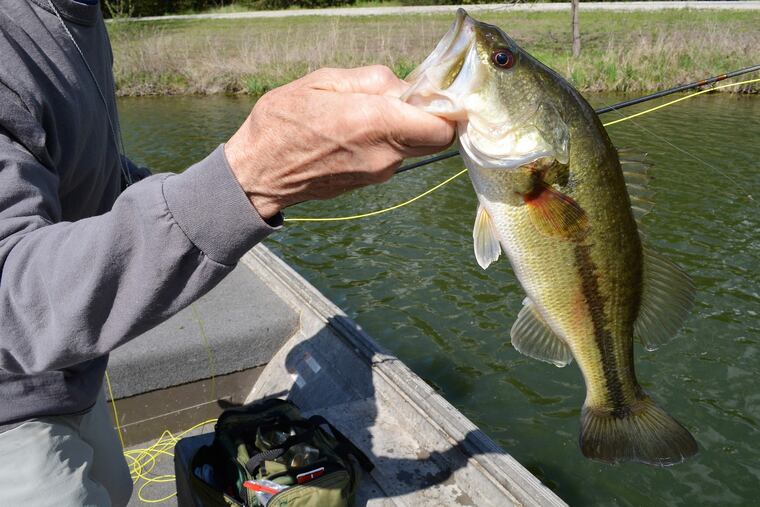N.J. finds PFNAs, ‘chemicals of emerging concern,’ in some recreational fishing waters
There is growing national interest in perfluoroalkyl and polyfluoroalkyl, chemical compounds once used to treat nonstick cookware, as well as put in firefighting foam, stain-resistance clothing and food packaging.

For the first time, the New Jersey Department of Environmental Protection has tested for man-made "chemicals of emerging concern" — often referred to as PFAS — in the lower Delaware River watershed and found the chemicals in multiple locations.
The expanded testing of fish in selected waterways was carried out as part of a regular update of fish consumption advisories, according to a news release issued Thursday.
There is growing national interest in a large group of chemicals known as PFAS, which includes compounds such as PFOA, PFOS and PFNA. The compounds were once used to make nonstick cookware, firefighting foam, stain-resistant clothing, and food packaging.
The Environmental Protection Agency says there's evidence that exposure to PFAS can lead to adverse health effects in humans, including increased cholesterol levels.
Debate about establishing safe levels has heightened after aides to former EPA Administrator Scott Pruitt attempted to halt publication of a study into water contamination near military bases nationwide, including former naval bases in Bucks and Montgomery Counties.
In that study, levels identified as safe for humans to ingest without a probable risk of health effects were lower than previously identified by the federal government. The report by the Agency for Toxic Substances and Disease Registry (ATSDR) identified levels of the contaminants a person could safely consume — and its threshold equals only one-tenth of the amount used by the EPA to develop its 2016 drinking water guidelines. The EPA, under new Administrator Andrew Wheeler, is holding a community forum on the chemicals in Horsham on July 25.
The NJDEP release did not state the levels it found in its tests, but said, "PFAS were detected at varying levels and combinations in all of the water bodies tested."
Those bodies included the Passaic River in Passaic County, the Raritan River in Somerset and Middlesex Counties, the Metedeconk River in Ocean County, several lakes adjacent to Joint Base McGuire-Dix-Lakehurst in Burlington and Ocean Counties, the North Branch of Rancocas Creek in Burlington County, Woodbury Creek in Gloucester County, Fenwick Creek in Salem County, and the Cohansey River in Cumberland County.
The waterways were selected because of their proximity to potential sources of PFAS. Of particular concern have been areas of Gloucester and Salem Counties near a Chemours facility in Pennsville. The agency did not cite those sources, but PFAS has been an issue in the state for years.
The DEP sampled water, fish tissue, and sediment.
Under the new advisories, the DEP cautioned anglers to eat very limited amounts of certain species in areas where PFAS was detected. Those in a high-risk population, which includes infants, children, pregnant women, nursing mothers, and women of childbearing age, should avoid consumption.
For example, the new listings for Fenwick Creek advise that people in the general population limit channel catfish consumption to only one meal per month; those in the high-risk category should not eat the fish at all.
DEP literature says PFOS that is released into the environment can contaminate surface water as well as groundwater used as drinking water sources. As a result, it can accumulate in freshwater fish, posing a potential health concern for those eating it. The chemicals can impact the immune system.
New Jersey is currently mulling what maximum contaminant levels would be considered acceptable for the compounds. For example, the Drinking Water Quality Institute, which advises the DEP, recommends that drinking water contain a maximum of 14 parts per trillion for PFOA and 13 parts per trillion for PFOS and PFNA.
The DEP has been testing waterways for years for its advisories on which species of fish should be consumed and how often. The monitoring also includes testing for mercury, pesticides, and PCBs.
Environmental groups welcomed the addition of PFAS testing. Maya van Rossum of the Delaware Riverkeeper Network called it a "landmark study documenting the prevalence and persistence of" the compounds in the state and an important advancement for public health.
Anyone wanting to learn more about which fish they can eat and how often can check the advisories.